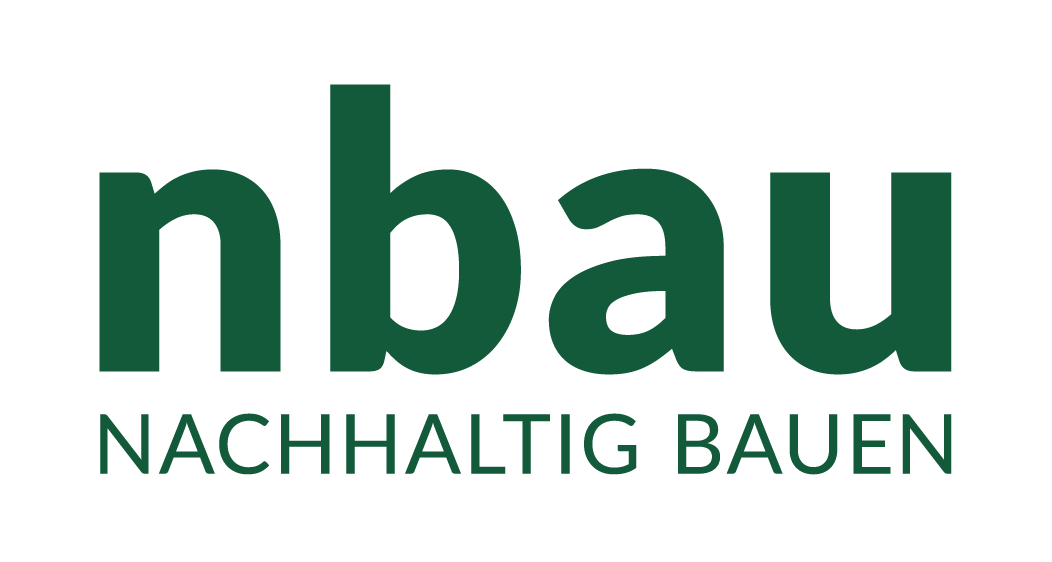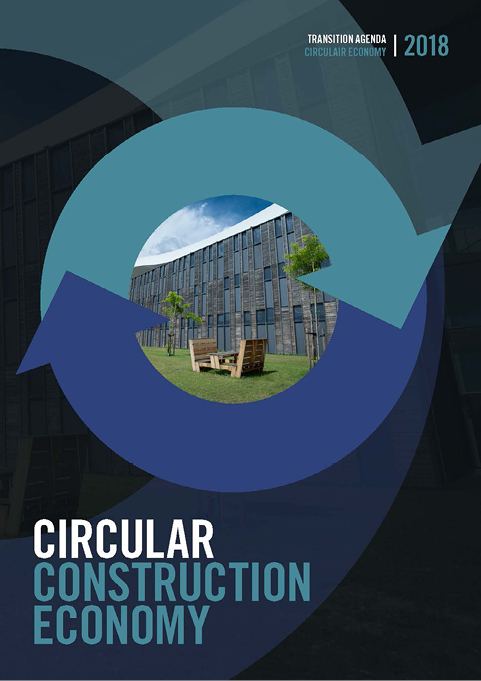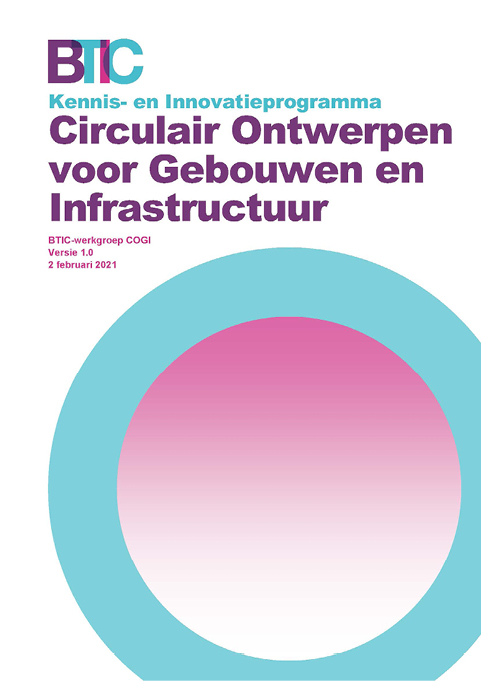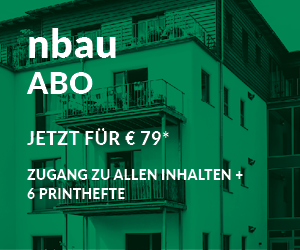Initiatives from the Netherlands
The transition to a circular paradigm in the building sector requires radical changes in the way we design, construct, use and transform buildings. In international comparisons the Netherlands is one of the circular pioneers. This paper introduces and discusses some creative initiatives that position the Netherlands as a frontrunner in the transition to a circular building sector.
1 Introduction
In the last ten years the concept of the circular economy has become an important topic on international agendas. The European Union and various member states have developed strategic plans for a transition towards a resource-efficient economic framework in accordance with the principles of a circular economy. In international comparisons the Netherlands has emerged as one of the pioneering countries in the transition to a circular building sector [1] and the Circular Gap Report 2022 called the Netherlands “a circular frontrunner” [2].
1.1 Objectives
This paper briefly introduces the context of the Dutch building-construction sector and highlights key actions that are making the Netherlands one of the leading countries in the transition to a circular building sector.
1.2 Problem field
On a global scale, scientific and other forms of evidence point towards the urgency of an accelerated societal transformation to tackle the impacts of climate change, the destruction of the biosphere, and increasing inequalities. We are in a pivotal decade, characterized by the interconnectedness of challenges, irreversibilities and tipping points. Humanity must act now, but without a profound change of socio-technical systems we will not tackle these challenges.
The Netherlands is a relatively small European country, with one of the highest population densities in Europe and a strong economy. The Netherlands recycles 80 % of its waste. This makes it one of the front runners in Europe, although it should be highlighted that this 80 % often involves low-grade recycling. The Netherlands is facing the dilemma that within the next ten years there will be a need to build 1 million new homes, to renovate 7.8 million existing homes, and simultaneously to reduce CO2 emissions drastically.
As in other European countries, the building sector is playing a crucial role. Compared with the totals for all sectors in the Netherlands, the construction industry is responsible for 50 % of raw material consumption, 40 % of energy consumption, 35 % of CO2 emissions, 30 % of water consumption, and 40 % of construction and demolition waste [3].
1.3 Relevance
Despite all the attention already given to circularity in the Netherlands, there is still work to be done on the basis of circular principles and their large-scale application in the construction and engineering sectors. Nevertheless, the Netherlands has developed initiatives and actions that might inspire and support the circular transition in other nations. In the following pages this paper will introduce three inspiring initiatives: first, the Transition Agenda – Circular Construction Economy, second, the MPG Environmental Performance of Buildings, and last, three distinct knowledge and innovation programs.
2 Transition Agenda – Circular Construction Economy
In 2015 the European Union adopted the first European Circular Economy Action Plan (CEAP) to guide the transition towards a circular economy. In response, in 2016 the Dutch Government was one of the first European countries to launch a government-wide program for a Circular Economy, entitled Nederland Circulair in 2050 (A Circular Economy in the Netherlands by 2050) [3]. Shortly after, additional action plans were launched. In 2017 The Raw Materials Agreement contained agreements between the central government and other parties on measures to accelerate the transition to the circular economy [4]. In 2018, guided by the Raw Materials Agreement, the government and the signatories drew up five transition agendas, focusing on five sectors and value chains that are central to the economy and have a high environmental impact. One of them focuses on the building sector, the Transitieagenda Circulaire Bouweconomie (Transition Agenda – Circular Construction Economy). To stimulate the implementation of the agenda, Transition Teams were formed [5]. Vincent Gruis has been the chairman of the transition team for a circular construction economy since 2022 (Fig. 1).
The agenda placed the Netherlands at the forefront of an ambitious mission: to make the building industry 100 % circular by 2050. It draws up the strategy and makes concrete recommendations for an ambitious plan for achieving a circular construction economy by 2050. One of its crucial contributions is setting out the Circular Building Economy roadmap in three steps:
2021 Circular Building Economy – Base Camp
2030 Circular Building Economy – 50 %
2050 Circular Building Economy – 100 %
The Transition Team conceived the first stage of 2018–2021 as being to develop a base camp. The base camp is a metaphor, as the transition to a circular building economy is equated with climbing a very high mountain that has never been climbed before. Starting from the base camp, the objective is to ascertain and define good and feasible ways to get up that mountain. Also, the metaphor of the base camp is used to indicate that we first need to create the conditions for the transition before we can scale-up the necessary innovations.
For the first stage, the transition agenda set out a wide range of specific actions like an inventory of what would be required to embark on this journey and make sure a base camp had been set up. The Transition Team formulated five focal points for the 2018–2023 Agenda: market development, measuring method, policy, legislation and regulations, and knowledge & awareness. These focal points lead to a series of proposed actions and interventions. For instance, the recommendations are to have all public tenders to include circularity by 2030, to gain insight into the materials and resources used in buildings, potentially by means of mandatory materials passports, and to continue the development of a uniform circularity measuring method [10, pp. 7–8]. Interestingly, about two years later the transition team recommended not to make materials passports mandatory, but instead to develop guidelines for materials inventories for when buildings are destined to be demolished.
The Transition Agenda – Circular Construction Economy has been a key initiative providing the context, roadmap and hothouse environment for a diverse set of other initiatives and actions in the mission to transition to a circular building sector. The following sections introduce selected initiatives that emerged in the wake of the transition agenda.
3 MPG Environmental Performance of Buildings: evaluating the environmental impact of materials in buildings
With the tendency to have the operational CO2 emissions of buildings to move towards zero, the embodied CO2 and the environmental impact of materials increasingly move center stage. In 2018 the Netherlands pioneered new building codes. The government introduced the MilieuPrestatie Gebouwen (MPG) (Environmental Performance of Buildings) as a mandatory assessment required when applying for a building permit. The MPG accounts for the environmental impact of materials used in new-build homes and new office buildings larger than 100 m² (www.rvo.nl/onderwerpen/wetten-en-regels-gebouwen/milieuprestatie-gebouwen-mpg).
The MPG is an important assessment method for factoring-in the environmental impact of building materials and entire buildings. A MPG score must be calculated for new buildings. The lower the MPG, the smaller is the impact of the materials used. The MPG has been developed with the goal of creating a clear, independent, comprehensible, and reliable tool in the design process, which can be used in a program of requirements at the outset of the design process, or to estimate material impacts during a design process.
Central to the MPG assessment is the Nationale Milieudatabase NMD (Dutch Environmental Database), which contains environmental data for building products and installations that are supplied by industry. The NMD’s environmental data contain environmental profiles: lists with environmental impacts expressed in various environmental impact categories, such as the depletion of raw materials, global warming potential and ozone layer depletion. If a building material supplier wants to have their product included in the NMD, they need to commission a qualified expert to perform a Life Cycle Analysis (LCA) in accordance with the specifications of the Stichting Nationale Milieudatabase (NMD). It is not necessary to carry out an LCA of the same product/material repeatedly. For the Netherlands, the characteristics of materials from the LCA’s are collected in the NMD. This database is managed by the Stichting BouwKwaliteit (SBK). Producers or suppliers themselves must ensure that a product is included in the NMD.
To determine the environmental impact of a material, the following eleven environmental impact categories are currently taken into account: depletion of abiotic raw materials (excl. fossil energy carriers), depletion of fossil energy carriers, global warming, ozone layer depletion, photochemical oxidant-formation (smog), acidification, eutrophication, human toxicity potential, ecotoxicological effects (aquatic – freshwater), ecotoxicological effects (aquatic – marine), and ecotoxicological effects (terrestrial) [6]. These eleven indicators are combined into one value: the shadow cost per unit of the product (kg, m3, m2, etc.). The MPG is calculated on the basis of European guidelines for LCA calculations (EN 15804) and will accordingly move towards the inclusion of 19 indicators. The MPG of a building is expressed in a single indicator that represents the sum of the environmental shadow cost of all materials used in that building. The environmental shadow cost is the hypothetical monetary value that would be needed to mitigate or compensate the environmental effect caused by materials. This often takes the form of an externality that is not taken into account in cost-benefit calculations. The shadow cost should also consider the materials that are replaced during the life of the building. The total sum is divided by the lifespan and by the gross floor area of a building. The MPG is then expressed in the shadow cost per square meter of gross floor area per year.
To calculate an MPG for a building in development, the materials and their quantities in a design must be identified. Even though it is the case that, for many materials and building products, one can work with standard products in the software packages, the proper calculation of the MPG nevertheless takes a relatively long time. Programs with which you can calculate the MPG can be found in the calculation instruments of the Dutch Environmental Database. The building parts that make the greatest contribution to the MPG are facades, floors and installations. In total, this is often 60 % to 80 % of the MPG. However, this can vary greatly depending on the geometry and installation concept.
In 2018, the MPG was set at a maximum limit value of 1.0. In 2021, the environmental performance for new homes (not for offices) was reduced from 1.0 to 0.8. The aim is to tighten the requirement step by step. The Minister of Housing has already announced that the aim is to reduce the MPG norm for dwellings to 0.5 and for offices to 0.85 from 1 January 2025. Developers and contractors on the housing market have already developed guidelines for how to comply with the new standards.
Since the introduction of the mandatory MPG score in 2018, building standards have forced architects, engineers, and developers to embrace a different mindset and to account for the impact of building materials. This shift supports the uptake of biobased building materials and an interest in re-used elements.
Worth noting is that the Raw Materials Agreement started with the objective of reducing the amount of raw materials used, with a target of 50 % by 2030, making circularity a goal in itself. The reasoning of the Transition Team has evolved since then, stating that circularity, when you look at it fundamentally, is a means to an end: it is a means to create a construction economy that does not damage our environment. Since then, the Transition Team has emphasized that the environmental shadow costs should be placed at the center of policy objectives and regulatory norms, to simulate a more holistic approach. Within this more holistic approach, the prevention of waste and resource depletion are important but are not the only environmental hazards that should be taken into account when striving for circularity. This point of view is an important step in broadening circularity towards the more inclusive concept of sustainability.
4 Knowledge and innovation programs
In the Netherlands, diverse knowledge and innovation programs have been set up to accelerate the transition to a circular building sector. These programs provided guidelines on implementing circularity in building practice and further identified key research topics to be investigated in the upcoming years. This section outlines three selected initiatives.
4.1 Building and Technology Innovation Centre
The first initiative is a knowledge and innovation program developed by the Bouw en Techniek Innovatiecentrum BTIC (Building and Technology Innovation Centre), and its program item Circularity. A writing team (including the authors) of representatives from various universities, schools of applied science, and the building industry developed the knowledge and innovation program Circulair Ontwerpen voor Gebouwen en Infrastructuur (Circular Design for Buildings and Infrastructures, fig. 2) [7]. The knowledge and innovation program highlighted the central role that design is playing in the circular transition in the building sector. It focuses on the challenge of realizing a circular built environment by designing concepts that make it possible to create circular buildings. In the program, design is interpreted in a broad sense. It concerns both the design as a product (artefact) and the design as a process (here understood as the integral process in which different stakeholders work together towards the shared mission of achieving a high quality and circular building). Based on the principles of the circular economy, the process does not stop with the realization of the building or renovation, but several cycles of use must be considered. This requires far-reaching cooperation in building chains and networks, and adaptation of the entire ecosystem in the building and engineering sector. Moreover, for certain conceptual product solutions, the right materials and building components are not yet available (on a sufficient scale). Product innovation will also be needed for successful implementation of circular designs in the built environment.
The program identified and set out five main research and innovation lines: (1) design (product), (2) design (process), (3) measurement (evaluation), (4) materials (chains), and (5) context (enablers).
Further, drawing on the 10R model [8] the program defined five key circular design principles, which complement one another and could (potentially) be combined [7]:
- Design with reuse – designing with raw materials from secondary streams
- Design with biodegradables – designing with raw materials from (partially) renewable streams
- Design for reuse – designing for standardization, compatibility and remountability
- Design for repair – designs for ease of maintenance
- Design by refusing – perhaps the most efficient way to avoid resource depletion is to make design choices that minimize material use (especially where scarce and harmful raw materials are concerned) and make the best possible use of the existing, which in the case of the existing building stock can be done by renovating and transforming buildings
The knowledge and innovation program Circular Design for Buildings and Infrastructures has become a key reference document for academic research and building practitioners. Moreover, since June 2023, sustainable innovation in the construction sector has been given the status of being one of the ‘top sectors’ for the Dutch national innovation policies, which opens the doors to more substantial innovation funding from the government. The program for Circular Design for Buildings and Infrastructure is used as input for targeting a part of that funding.
4.2 Platform CB’23
The second initiative to be introduced in this paper is Platform CB’23, which aims to connect construction-wide parties that have circular ambitions, both in the building and civil engineering sectors and in residential and non-residential construction. The aim has been to draw up national, construction sector-wide agreements on circular construction by 2023 (platformcb23.nl). In comparison to the BTIC, Platform CB’23 is more targeted towards building practitioners and has developed various guidelines that are available for free download (platformcb23.nl/downloads), for example the 2023 Guideline Circular Design (version 2), the 2022 Guide Measuring Circularity (version 3), the Lexicon Circular Construction (version 2). The documents and guidelines of Platform CB’23 are making an important contribution to the advancement of circularity in the built environment because they sharpen vocabulary, approaches and tools. While the question of how to evaluate and assess circularity in building practice remains contested, the 2022 Guide Measuring Circularity is currently considered to be one of the most advanced approaches.
4.3 Cirkelstad
The third initiative to be introduced is Cirkelstad (Circular City), which is “a cooperative organization, organized in Circle-cities and bringing together frontrunners in the circular and inclusive building sector. Cirkelstad partners meet to exchange knowledge, discuss cases, best practices, and support each other in Communities of Practice” (www.cirkelstad.nl). Cirkelstad has initiated a broad array of events and reports to advance circularity in the built environment. One of their flagship projects is the development of Het Nieuwe Normaal (HNN) (The New Normal) in an attempt to create a new standard with ambitious, achievable performance for circular building. “With Het Nieuwe Normaal (HNN) we work on one language for circular building. Essential for commissioning and commissioning parties if we know what we want to ask, how we do it and what we deliver.” HNN helps to concretize the circular ambition of organizations and projects in various ways. It can serve as a basis to develop a vision at project outset or it can provide tools to ensure circularity in projects as a project leader. To assess the performance of an (emerging) building, HNN ranks next to operational energy and material use, and also challenges the reuse potential, adaptive ability, and detachability (Fig. 3). Currently HNN for building is available in version 0.6 and version 1.0 will be launched in December 2023. Crucially, The New Normal has become a key reference for planners in the municipal field, architects, engineers and developers in translating the principles of the circular economy in building practice through a clear method that allows actions to be accounted for.
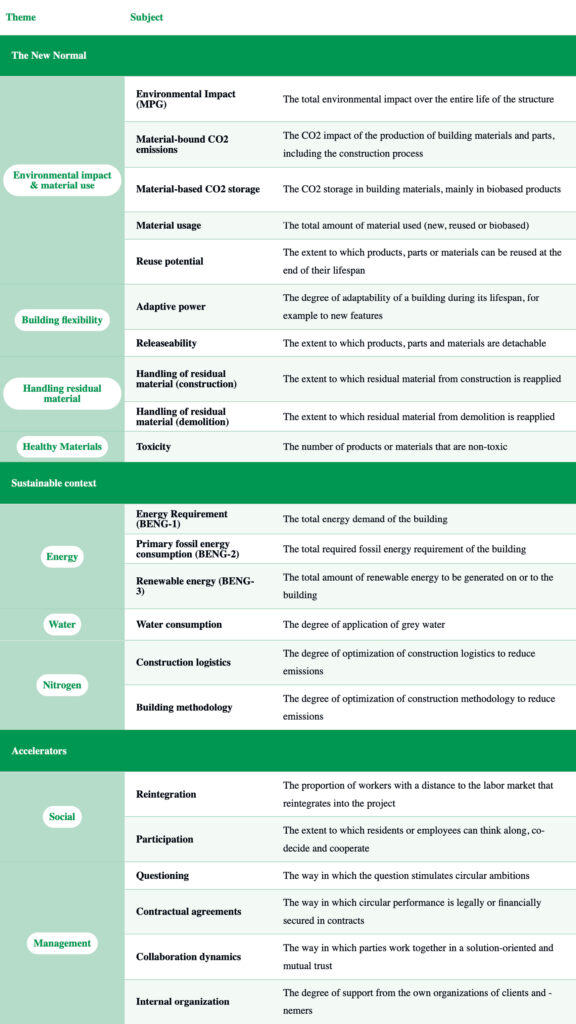
Source: English Translation of www.hetnieuwenormaal.nl
5 Discussion
Despite all the attention given to circularity, we are still in the early stages of working on the basis of circular principles and of their large-scale application in the construction and engineering sectors. There is still much to do. In the Netherlands, the use of most raw materials has generally not decreased. With the current trends and the policy deployed, the halving of abiotic resource use envisaged by the government in 2030 will not be achieved [9].
The transition to a circular building sector is complex and requires actions that break down boundaries between specialized disciplines, sectors and stakeholders, while working at different scales. Thus the transition towards a circular society asks for an interdisciplinary approach across diverse scales and time frames. The circular transition does not refer merely to a technical change, such as using new materials or adopting new recycling technologies. Often, the concept of circular economy and the concept of sustainability are used as if they were exchangeable. But although related, the concepts are fundamentally different. In the 1990s the concept of sustainability reframed environmental politics “by arguing explicitly that goals for protecting the Earth’s lands and wildlife could not be realised except through strategies that also addressed the improvement of human well-being in conservation areas” [10]. The transition towards a circular society also needs to be a just transition. The social dimension (affordability, participation, etc.) is mostly under-represented in circular approaches, and further research and new approaches are needed to link circularity to sustainability.
The initiatives introduced in this paper are crucial building blocks for advancing the transition towards a circular built environment. Many pioneering approaches have been put forward. Various companies in the construction and engineering sectors are developing circular concepts, and there is increasing attention to the sustainability of building materials. There is also a growing number of networks devoted to the exchange of knowledge about a circular built environment.
One aspect (of many) that still needs more attention is that much of the focus has been on circular new construction. If we look at the environmental shadow costs (explained above), in the Netherlands in 2019, more than half was caused by renovation activities in the building sector rather than by new construction. A large part of this is caused by the measures we take to make our homes and offices more energy efficient. Of course, the environmental shadow costs per renovated dwelling are lower than the environmental shadow costs of constructing a new dwelling, but the sheer volume of renovations and repairs mean that in absolute numbers the total amount of the environmental shadow costs of renovations and repairs is higher than the total caused by construction of new housing. Taking into account the agenda for deep renovation across Europe, this leads to the uncomfortable paradox that in order to create a more environmentally friendly building stock, we first need to increase the environmental hazards caused by the renovation itself. Circular approaches can, however, help to significantly reduce these, so we in Europe should emphasize circular building renovations.
Related to the focus on new construction is the fact that we still need to develop more explicit end-of-life policies and practices. The Dutch Transition Team has, for example, suggested a reduced focus on material passports for newly constructed buildings, but to link these to demolition permissions. It has also suggested the introduction of obligatory plans for re-use of materials, so that we are stimulated to plan for the next use of the building components at a natural moment in the buildings’ life cycle.
In addition, there is a mismatch between the ambitious goals set by the government(s) and the policies deployed. Current policy focuses mainly on voluntary and non-binding agreements. This is relevant, but is not sufficient to realize a transition that makes resource use radically more efficient as well as establishing this as common practice. More stringent regulations as well as substantial innovation funds should be steered towards the circular transition, ideally in synergy with our climate policies.
References
- ETC CE (2022) Circular economy country profile – the Netherlands [online]. European Topic Centre on Circular economy and resource use. https://www.eionet.europa.eu/etcs/etc-ce/products/etc-ce-products/etc-ce-report-5-2022-country-profiles-on-circular-economy/netherlands_ce-country-profile-2022_for-publication.pdf
- Circle Economy (2022) The Circularity Gap Report 2022. Amsterdam: Circle Economy.
- Government of the Netherlands (2016) A Circular Economy in the Netherlands by 2050: Government-wide Programme for a Circular Economy [online]. Den Haag: Government of the Netherlands. https://www.government.nl/topics/circular-economy/circular-dutch-economy-by-2050
- Government of the Netherlands (2017) Grondstoffenakkoord: Intentieovereenkomst om te komen tot transitieagenda’s voor de Circulaire Economie [online]. Den Haag: Government of the Netherlands. https://open.overheid.nl/documenten/ronl-e7081689-7484-40ac-b339-bcb2af364769/pdf
- Transitieteam Circulaire Bouweconomie (2018) Transitieagenda Circulaire Bouweconomie: Samen bouwen aan de circulaire economie voor Nederland in 2050 [online]. https://circulairebouweconomie.nl/wp-content/uploads/2019/09/Circular-Construction-Economy-1.pdf
- Stichting NMD (2022) Environmental Performance Assessment Method for Construction Works [online]. Rijswijk: Nationale Milieudatabase. https://milieudatabase.nl/media/filer_public/89/42/8942d5dd-8d37-4867-859a-0bbd6d9fb574/bepalingsmethode_milieuprestatie_bouwwerken_maart_2022_engels.pdf
- BTIC (2021) Kennis- en Innovatieprogramma: Circulair Ontwerpen voor Gebouwen en Infrastructuur [online]. Delft: Bouw en Techniek Innovatiecentrum. https://tki-bouwentechniek.nl/wp-content/uploads/Kenns-en-Innovatieprogramma_BTIC_CirculairOntwerpen_02022021.pdf
- Cramer, J. (2017) The Raw Materials Transition in the Amsterdam Metropolitan Area: Added Value for the Economy, Well-Being, and the Environment. Environment: Science and Policy for Sustainable Development 59, No. 3, pp. 14–21. doi.org/10.1080/00139157.2017.1301167
- Hanemaaijer, A. et al. (2023) Integrale Circulaire Economie Rapportage [online]. Den Haag: Planbureau voor de Leefomgeving. https://www.pbl.nl/sites/default/files/downloads/pbl-2023-icer-2023-4882.pdf
- Schellnhuber, H.-J.; Crutzen, P. J.; Clark, W. C.; Claussen, M., Held, H. (2004) Earth system analysis for sustainability. London: MIT Press.
Authors
Dr. Torsten Schröder, t.w.a.schroeder@tue.nl
Assistant professor of Sustainability in Architectural Design
Eindhoven University of Technology
Coordinator of the Domain Acceleration Team (DAT)
Sustainability and Circularity at 4TU.Built Environment
www.tue.nl
Prof. dr. ir. Vincent Gruis, v.h.gruis@tudelft.nl
Professor of Housing Management
Delft University of Technology
Chair of the Dutch Transition Team for a
Circular Construction Economy
www.tudelft.nl
